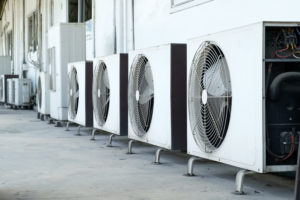 We’re moving into spring and no doubt there are conversations going on in homes and apartments everywhere regarding buying and selling a property. Did you know that according to the National Association of Realtors “comfort” is the most desired feature for buyers? What exactly is “comfort” in a home and how do we achieve it?
We’re moving into spring and no doubt there are conversations going on in homes and apartments everywhere regarding buying and selling a property. Did you know that according to the National Association of Realtors “comfort” is the most desired feature for buyers? What exactly is “comfort” in a home and how do we achieve it?
Define Comfort
Simply put, comfort is a state of physical and mental satisfaction with one’s thermal environment. It’s that Goldilocks feeling not too hot and not too cold. What factors contribute to making a home comfortable? We’ll explore that in the rest of this article. Sellers – if your home has any of the features I’m about to go through, fantastic! Don’t forget to talk to your real estate agent about them. And buyers, be on the lookout for features like these as you visit a property. They are the markers of a pleasant living experience (and lower energy bills).
1. Air Sealing
Air sealing a home is the most frequent recommendation from building scientists, but this term hasn’t exactly captured homeowners’ imaginations, and many insulation contractors don’t talk about it. Here’s the thing, air sealing is the single most cost-effective home improvement you can do for comfort and energy savings. I didn’t put that in all caps, but was definitely tempted to! Air sealing is typically done with caulking (follow these simple instructions) and spray foam, and you can DIY some of it as well. The US Dept. of Energy has a lot of useful information on air sealing. Contractors will run use special performance testing equipment like a blower door when air sealing the home to ensure it meets minimum ventilation standards for health and safety. Air sealing lowers humidity in the summer, keeps bugs and the dust-out, and gets rid of that drafty feeling many older homes have. It’s your #1 overall comfort improvement for the home.
2. Crawlspace
If your home has a vented crawlspace, another thing you want to look for is whether or not the crawlspace has been insulated and air sealed. When it’s 15 degrees in December and your first floor is essentially hovering over outside air, it’s slipper time. Cold floors mean cold feet and other comfort issues. How do you know if your crawlspace is ventilated or not? Walk around your home and look at the foundation – if you see vents in it, it’s vented. You can open the crawlspace hatch to take a peek under your home too. If you see plastic on the ground and up the foundation walls and insulation under the floor, then you likely have an encapsulated crawl – congrats on that feature. Encapsulating a crawlspace will also improve humidity or mold issues, so there are many indoor air quality benefits that come with this home feature too.
3. Ducts
What other features contribute to comfort? Proper ducting. Ducts are the plastic or metal tubes that bring heated and cooled air to rooms in your home. If they are not sized properly for your home and system, you will have comfort issues on both ends of the too hot and too cold spectrum. If they are not insulated or air-sealed and are in an unconditioned space (like an attic), you will have comfort issues. If they are bent or otherwise restricted in some kind of bad installation way, you will have comfort issues – and it won’t matter how fancy the HVAC system is.
4. The Attic
Make sure the home is up to code when it comes to its attic insulation. Virginia requires R-38 for the attic, ENERGY STAR requires R-49. You can guess which one I’m going to recommend – R-49. I recall one client telling me about his experience after getting proper insulation blown in his attic, “It’s like someone put a blanket on the home!” Yes, it is. And he’ll sleep much better at night with it.
